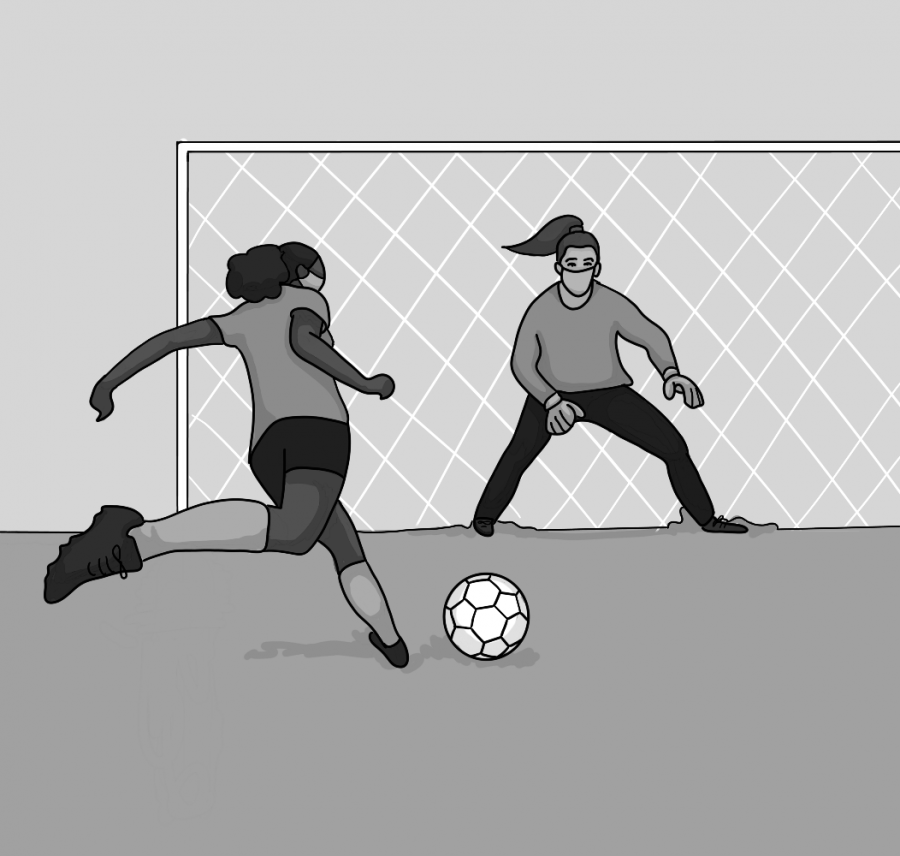CAMPUS: Athletes adapt to COVID-regulated practices
Sports practices have involved social distancing and mask-wearing.
Reporting by Federico Martinelli and Isa Miyauchi-Garde
Starting Dec. 6, 2020, Santa Clara County went into another form of lockdown, resulting in the suspension of all athletic conditioning until further notice. According to SCHS Principal Gregory Shelby, official practices were set to begin on Monday, Dec. 14 but have now been canceled. Guidance from the state and Central Coast Section will determine any final decisions.
Prior to the Dec. 6 restrictions, cross country and tennis were able to practice after Santa Clara County moved into the Purple Tier on Nov. 6. Before practices, students had to fill out a survey answering questions about their health: if they have been exposed to a person with COVID-19, if they have any symptoms and other similar circumstances.
With only limited conditioning, competitions and other aspects of being on a team are lost. Senior cross country athlete Viviann Luong is upset about COVID-19 restricting the 2020-2021 sports programs.
“This year I had the vision of going to CCS, making it to CCS finals and maybe even States, or something like that,” Luong said. “And it’s just like that little string of hope to grab onto is just wrecking me a little bit.”
Some student athletes are disappointed but understand why sports were canceled.
“I wasn’t mad. I was just bummed out, but we had to do it,” sophomore football and basketball player Clemente Beltran-Castro said. “It’s the right choice, even though it might not be the happiest.”
For many athletes, playing a sport is important both for their physical and emotional health. Practicing with teammates can improve moods and motivation.
“If there is no practice, I’ll be super down for some reason, and I just can’t concentrate on anything. When I’m running and I’m around my teammates and everything – even if we have to stay six feet apart – I still feel better,” Luong said.
The mental and physical outlet that sports provide is important to many students, but with the rising COVID-19 cases, practices can become dangerous. Prior to the Dec. 6 restrictions, athletes like Luong, who has a little sister and grandparents, were worried about catching something from practice and bringing it home, but despite this, athletes trusted each other to be responsible.
“I was of course hesitant about that (going back to practice after moving into the purple tier), but I’m willing to take a risk because I know my teammates and coach will follow the guidelines,” Luong said.
Many coaches recognize students’ disappointment in not being able to physically go to school and understand the importance of sports continuing.
“That really hit home that students don’t really have much of a connection with the physical place of their school during COVID,” SCHS varsity tennis coach Will Kennedy said. “Particularly freshman. It’s just a building to them, so it’s nice that the students could actually physically be there.”
COVID-19 has taken many things from SCHS students, and even with restrictions on the remaining sports that were open, they inevitably had to be shut down.
“I feel like having school and no sports would be like having a big hole – wouldn’t feel 100 percent right,” Beltran-Castro said. “Well, nothing is going to feel right for a while.”


